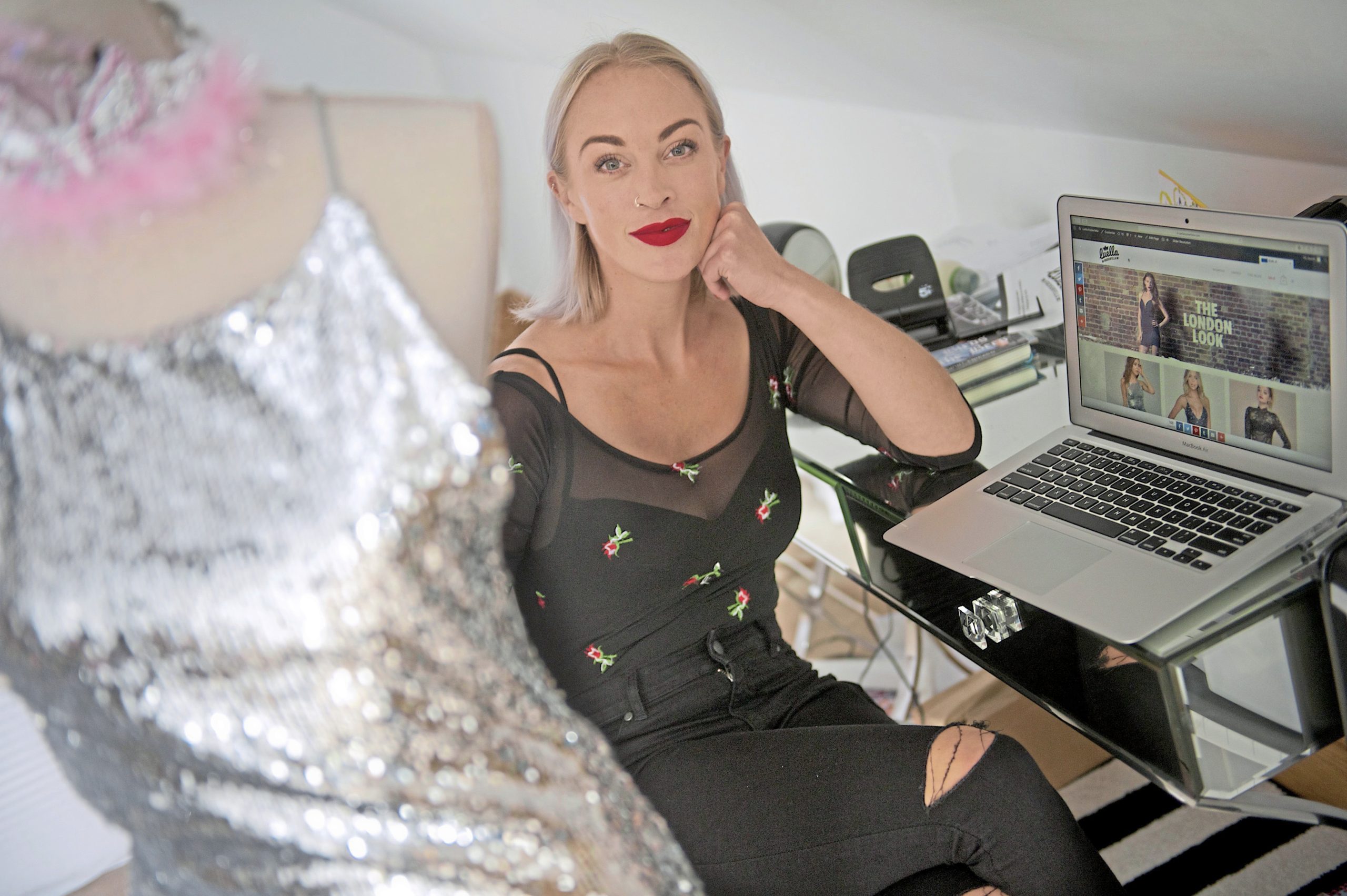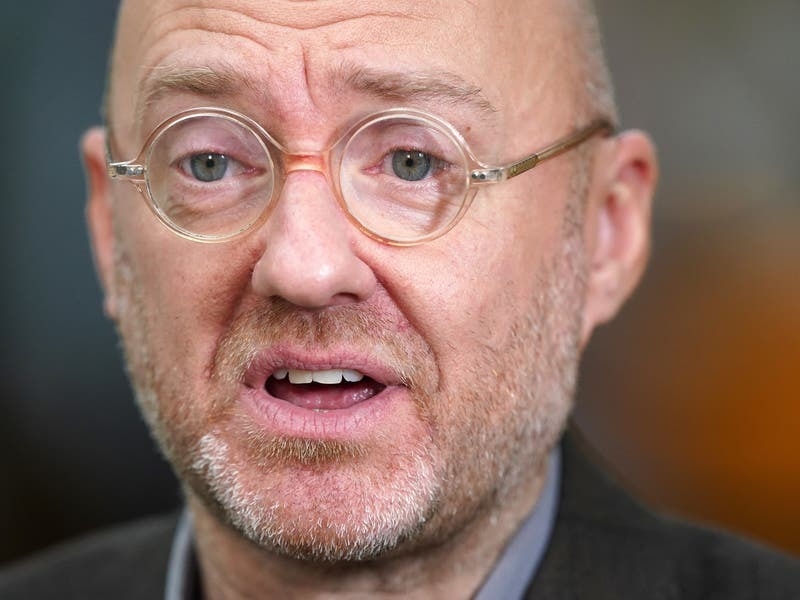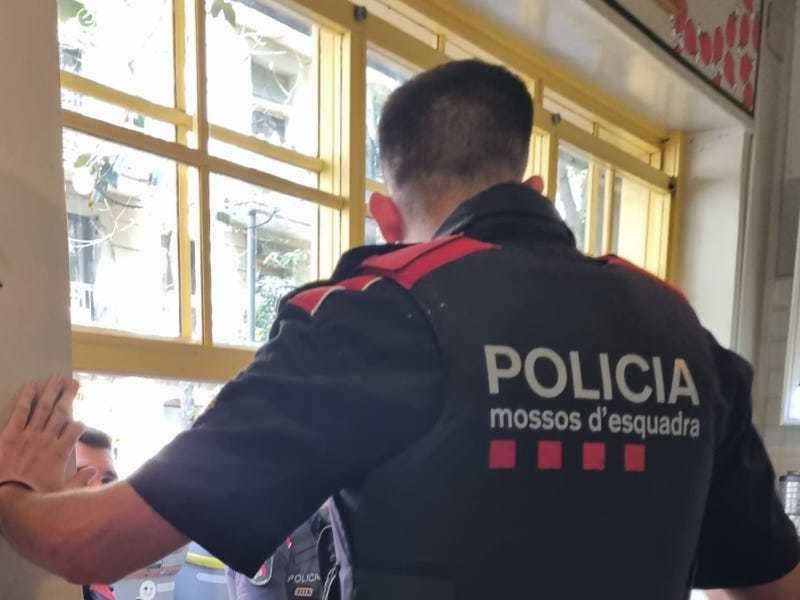Lauren Burnett smiles wider than most – and for good reason. Aged 33, she has two children she adores, a successful online fashion business and a social media following of more than 50,000.
A love of life is writ large upon her face, but nine years ago, the attainment of happiness seemed to her like an impossible goal – even if, at the age of 24, she still enjoyed many of the accoutrements that come with success.
In her mid-twenties, her compelling personality and attractive looks had helped her secure a multitude of modelling contracts and she had been living a luxurious lifestyle that is the preserve of the privileged few.
Lauren had been a promotional model for Oakley in the French Alps, for Quiksilver on the Mediterranean and had even strutted her stuff in Formula One, as a grid girl at the Australian Grand Prix in Melbourne. She had stayed in mansions and had attended the types of parties where champagne flows as freely as water, and celebrities bathe in Jacuzzi bubbles.
Behind the party-girl persona, however, she was a lost soul. So lost, in fact, that when the global financial crisis happened in 2008 and her modelling work dried up, she returned to Jersey and accidentally overdosed on heroin in her bedroom.
‘I was sat up in bed, accidentally overdosed and fell on top of a lamp,’ says Lauren. ‘For six or seven hours, I gradually slipped into unconsciousness. The lamp bulb slowly burned through my hair on the crown of my head to the scalp, but I was totally unaware of the damage being done.’
She was a person who had enjoyed a loving upbringing and good schooling – no one could have foreseen that addiction would come to haunt Lauren’s life.
‘I wasn’t your stereotypical drug taker,’ she explains. ‘I grew up in St Brelade, in a nice house with two younger brothers and both our parents had good jobs.
‘But you can have a good upbringing and education, and still become an addict. You can make one bad mistake in your social life and suffer years of addiction.’
Hers was to fall in with, as she puts it, ‘the wrong crowd’.
‘I had started to smoke marijuana, and very quickly I went from trying pot to smoking heroin when I was still in my teens. The rave scene was emerging in Jersey and I went to a lot of raves and house parties.
‘When a house party or rave was winding down, the “cool people” – as they appeared to me – would disappear into a room and I wanted to go into that room, too. Behind closed doors they would take heroin and I started to join them.
‘I was constantly vying for acceptance among my peers and I found solace and acceptance by befriending people through that scene.’
Lauren began shop-lifting to pay dealers for drugs and ended up accompanying a surfer on a spontaneous sojourn to the south of France. There she met a movie producer who made surf, skate and snowboard movies for the Extreme Sports Channel.
‘He introduced me to the under-21 Quiksilver surf team and I got a job doing modelling work for the sponsors of the Quiksilver Pro surf competition, Samsung.’
After the surf season ended, Lauren moved to Val d’Isère in the French Alps, where she worked as a promotional model for Oakley, who were sponsoring snowboard competitions.
She subsequently spent the next three years dividing her time between Val d’Isère and the town of Hossegor, a surfing mecca near Biarritz, before returning to Jersey.
‘I then befriended another surfer and we went travelling to Australia. I still took drugs, but sporadically. I could hide the fact that I was occasionally taking heroin, but whenever I had connecting flights in London, I would always score. I’d go into the centre, find a Big Issue seller and I’d say, if you help me find a dealer I’ll give you some money.
‘I didn’t have the maturity to reflect on what I was doing, so I thought I was over my addiction and I was just dabbling in drugs, but the addiction was always bubbling under the surface.’
In Australia, her modelling career took off – even though the dark shadow of addiction continued to stalk her.
‘I worked for a great modelling agency called the Vanity agency in Sydney. For a long time I didn’t take hard drugs, and the agency knew nothing of that side of my life.
‘And through the modelling agency I got some amazing bookings – I was a grid girl for Formula One at the Australian Grand Prix in Melbourne, and I also got employment modelling at car shows for GM Motors.
‘However, with the ups came the downs and I would find doctors to prescribe me medication for various ailments I faked.’
When the economic crisis struck in 2008, Lauren was forced to pack up her suitcase.
‘My agency said they could only employ Australian models from that point and work dried up. I was 24 and I hadn’t taken hard drugs for a very long time, but when I came back to Jersey I got hold of some heroin and I thought I could do what I used to do.’
It was her mother who raised the alarm, after discovering Lauren’s listless body slumped over the bedside table, as her daughter’s head lay burning against the lamp after she had accidentally overdosed.
‘When my mum found me I was blue. My brothers Alex and Scott, who were downstairs, could hear my mum screaming so they rushed upstairs and Alex resuscitated me. I remember waking up and seeing Alex’s face, but at that point I felt no pain.
‘I didn’t want to go to hospital because I had made a living out of modelling and I knew the doctors would have to shave my head.
‘Although my family tried their best to persuade me to go to the hospital right there and then, I left it a day until I went in, and in that time I contracted the bacterial infection MRSA.’
Six hours spent with her head lying on top of the bright lamp had resulted in extensive burns to her scalp and the loss of nearly 50 per cent of her hair.
‘The surgeons told me they would have to shave the skin from the top of my leg and graft it over the wound on my head. But because I had caught MRSA, it took a long time for it to heal.’
She eventually underwent skin expansion treatment in London to cover the bald patch on top of her head.
‘Surgeons cut my head open and put two empty surgical balloons into my head. Every week for a year and a half they injected sterile water into the balloons, to expand the skin tissue around the sides of my head where hair was still growing.’
Once the balloons were fully expanded, the surgeons removed them and pulled the stretched skin over her bald patch, before stapling her head back together.
All told, Lauren says it took her three-and-a-half years to physically recover from the head wound.
‘For some of that time I worked for one of the biggest modelling agencies in the world, in London. I was working as a trainee agent and it was an amazing experience, but it didn’t last long because I was still taking drugs from time to time.
‘During this period I would sometimes socialise in the same circles as the late singer Amy Winehouse and fellow musician Pete Doherty, and for a while I stayed with other models in London in a five-bedroom mansion complete with a Jacuzzi – there were parties every night.
‘These models were the faces of Burberry, of Agent Provocateur, Victoria’s Secret – they were the top models of that moment. But I was leading a double life, as none of these models had any idea that I sometimes took hard drugs.’
Once Lauren had the balloons removed from her head, she made what was perhaps the most important call of her life. It was to her mum.
‘I told her I wanted to make a fresh start – and for the first time in my life I really meant it.
‘My mum has always been there for me and she has always shown me a lot of love throughout my life. She spent the whole time beside me when I was in my hospital bed with the head injury, and she was, and still is, my best friend.
‘Without her, there’s no way I would have been able to have survived what I went through.’
Lauren also revealed to her mum that she was pregnant, and she subsequently gave birth to her son, Camden.
‘I had weaned myself off hard drugs so he was a completely healthy baby from birth, but his
arrival made me realise that I needed to address my addiction issues once and for all.’
Lauren pauses. She has been retelling her story to me on the other side of a coffee table at the café at Fort Regent. Beside us, her son, Camden, now five, is playing in the children’s area. Lauren studies him intently with all the compassion of a doting mother, and tears well up in her eyes.
‘I thought, I don’t want to mess up my son’s life,’ she adds, her voice quivering with emotion, ‘so I underwent the 12-stage plan, in Jersey and in Devon, where my brother Alex was living with his fiancée Jess Bardsley.’
The 12-step plan is a treatment programme in which people follow a set of recovery steps to achieve abstinence from drugs.
‘My mum, Alex, Jess, and one of her family members all spiritually helped me to readjust my mind-set while I embarked on the programme. The only “drugs” you are allowed during the programme are tea and coffee, and I came out of it completely clean. I’ve been clean ever since.’
She then resolved to put sport at the centre of her leisure pursuits.
‘I come from a family of amateur boxers – my dad used to be an avid boxer and Alex is a boxer – so I also took up boxing in the gym.’
Lauren may have taken up boxing, and not archery, but she could not evade Cupid’s arrow.
‘I fell in love with my personal trainer, Tom Frame (24) and I went on to give birth to our daughter, Luella.
‘My partner co-owns his business, the health and fitness company Physique Transformations, and that got me thinking about what I’d love to do myself.
‘I was passionate about creating fashion and I decided to set up an online fashion company.’
Inspired by the positive energy of her son Camden and daughter Luella (3), she named her fledgling business after them.
‘My nickname for Camden was always Rockerfella – as in “my little rocker-fella” – and so I called the business Luella Rockerfella.
‘These days the business is aimed at young females aged between 18-26. The website sells young, affordable, cool and edgy fashion and I also have my own fashion line.’
Lauren soon built up a dedicated social media following for her online fashion company and across Twitter, Instagram, Facebook and her own blog, she now has more than 50,000 followers.
Her efforts to raise the profile of the business have paid dividends, and with the help of foreign investment, it is not so much blooming, as booming on a global scale.
‘Most of my business comes from New York, San Francisco and other places in the United States, Japan, Singapore, Dubai and I even had a buyer from Denmark earlier this week.’
Although her struggles with addiction are in the past, Lauren is keen to raise awareness about the issue and through her company, she is fundraising for The Silkworth Trust, a Jersey charity which specialises in drug and alcohol rehabilitation.
‘The thing about addiction is that it is not selective – addiction exists in all social circles and societies – and it must be seen as an illness in those who suffer from it. I want to raise awareness about this subject and at the start of last week I launched a new hat range to benefit The Silkworth Trust.
‘Profits from the sale of my new hat range are going to Silkworth and already, in just over a week, £500 has gone to the charity.’
Lauren creates the hats in collaboration with a fellow fashion designer, and has also managed to get La Moye Prison involved in the charitable undertaking.
‘Once the hats are made, they are sent to the women’s wing of La Moye Prison – I leave the finishing touches for the female prisoners to complete. The idea is to positively impact the lives of female inmates by offering them the chance to develop a new skill.’
Her altruism does her great credit, but is she truly at peace with herself?
She beams that wide smile.
‘I’m happy. I’m focussed on expanding my business and I can put my head on my pillow at night knowing I’m doing my utmost to give my children the best future I can.’






